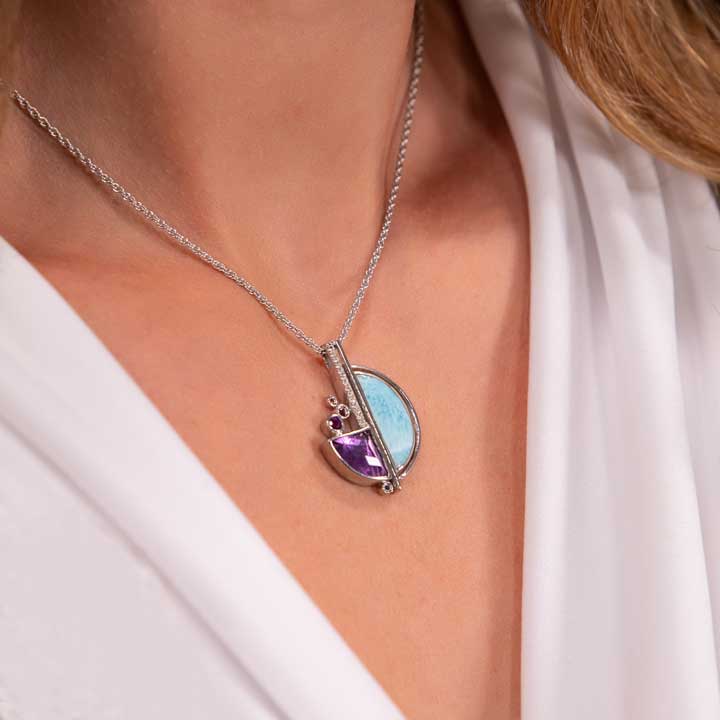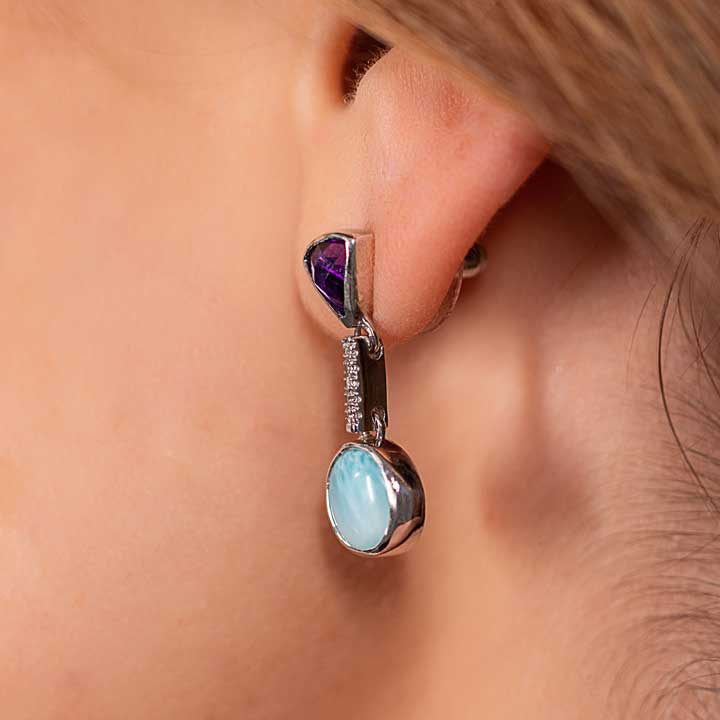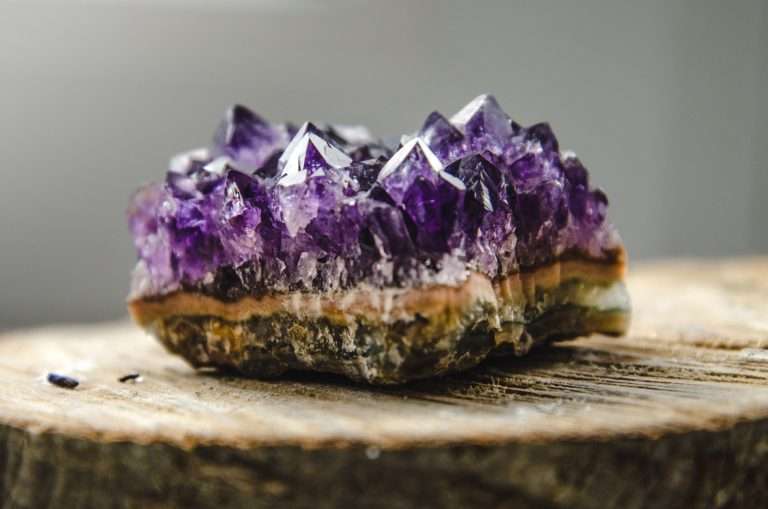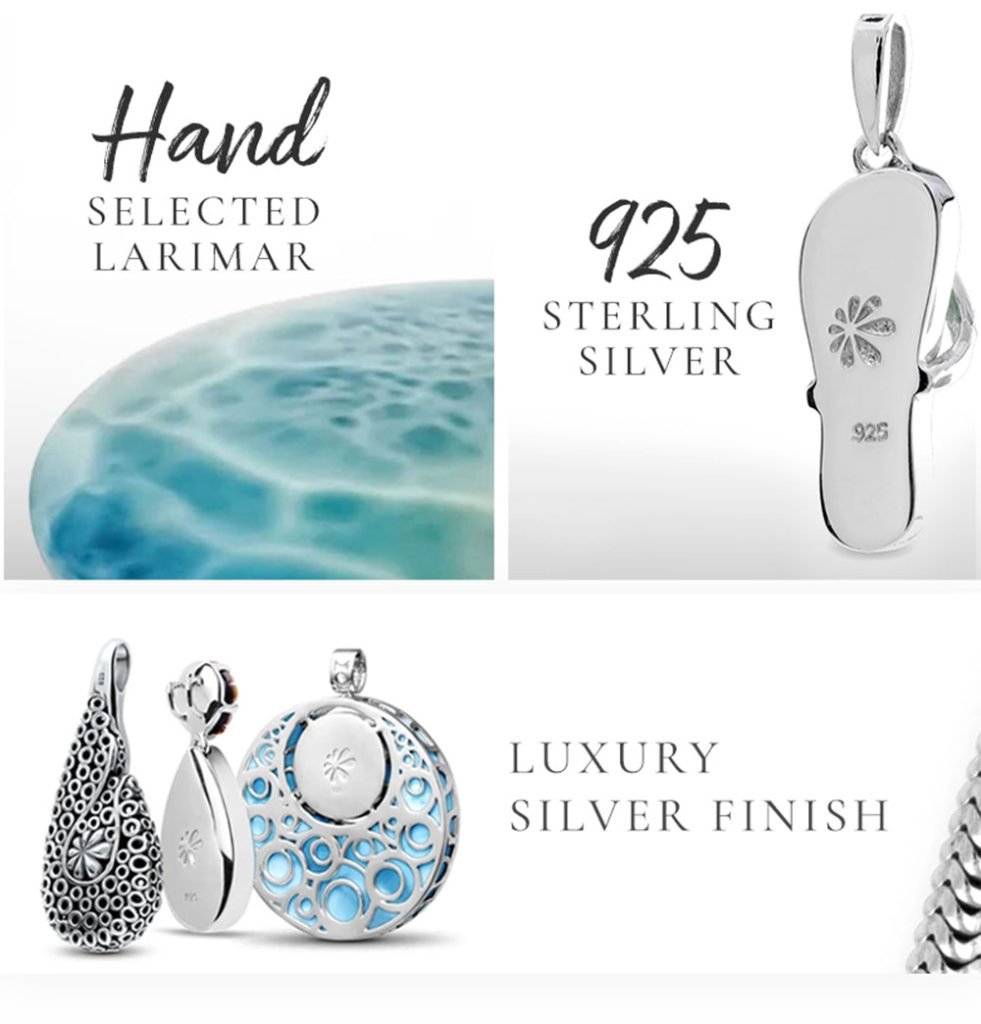Have you ever caught sight of the enchanting color of amethyst? That royal, mesmerizing shade of violet is not just stunning but holds a depth of history, culture, and meaning. Often associated with tranquility and spiritual connection, amethyst has a way of catching eyes and hearts.
What’s more, the amethyst color is more than a pretty face. It symbolizes wisdom, creativity, and even sobriety in various cultures. Whether you’ve got an amethyst ring passed down through generations or a newly acquired necklace, you’re wearing more than a gemstone. You’re wearing a piece of history.
But how does this stone get its unique color, and what makes it so special? Well, buckle up, because we’re diving deep into the world of amethyst, exploring its formation, shades, and even its combination with other stones. Stick around; the journey is as dazzling as the stone itself!
How is Amethyst Formed?
The creation of amethyst is like a masterful symphony performed by nature itself. Born deep within the Earth, the formation of amethyst is a delicate balance of minerals like iron and clear quartz. Add a pinch of radiation from surrounding rocks, and over millions of years, you get that alluring amethyst color.
The process is intricate and requires specific conditions. Too much or too little of any element, and you’ll get a completely different stone. It’s a delicate dance that takes place beneath our feet, resulting in the breathtaking beauty we see in amethyst jewelry.
Isn’t it amazing to think that the amethyst stone in your favorite ring or necklace took ages to form? It’s like wearing a piece of art that has been carefully crafted over time by the Earth itself.
The Chemistry of Amethyst
The chemistry of amethyst is fascinating, offering an insightful peek into how nature paints its masterpieces. The amethyst color is primarily due to iron impurities and natural radiation. When combined and exposed to specific conditions, they create a stunning violet hue.
What’s even more interesting is that by altering these conditions, you can change the color of the stone. Some amethysts are heat-treated to produce citrine, a lovely yellow variety. It’s like a chemical canvas that can be painted in various shades!
The delicate balance of elements that create the amethyst color is a testament to the complexity and beauty of our natural world. It shows that there’s artistry in the chemistry and that science and aesthetics can dance a graceful waltz.
How Often Do Amethyst Occur?
Despite its royal appearance, amethyst is a common citizen in the gemstone world. It’s found across continents like Africa, South America, and even parts of North America. The amethyst’s frequency doesn’t take away from its charm but adds to its accessibility.
Don’t you love the idea that something so beautiful is not confined to the elite? That anyone can enjoy the stunning amethyst color in various jewelry pieces or as a unique collector’s item?
It’s a reminder that beauty is often closer than we think, waiting to be discovered. Amethyst proves that you don’t need to look far to find something extraordinary. It might just be hidden in the nearby mountains or a local jewelry shop.
What are the Shades and Colors of Amethyst?
The amethyst color isn’t one-size-fits-all. From rich, deep purples to soft lilacs, it comes in a rainbow of shades. The exact color can depend on where the gemstone was found and the specific minerals present during its formation.
Some amethysts might even exhibit a gradient effect or “color zoning,” displaying several shades in one stone. It’s like having multiple layers of a beautiful painting encapsulated in a single gem!
Whether you prefer the darker, more intense shades or the light, whimsical hues, there’s an amethyst color for every taste and occasion. Each shade tells a different story, and choosing one is like picking your favorite chapter from a beautiful book.
The Combination of Amethyst and Larimar in Jewelry

Have you ever thought about pairing the mysterious amethyst color with the serene, ocean-like hues of larimar? This combination in jewelry design is a match made in heaven, reflecting the beauty of both earth and sea.
Imagine a necklace with deep purple amethyst next to the calming blue larimar. It’s like wearing a piece of the twilight sky, where the last rays of the sun meet the calming sea.
The combination isn’t just aesthetically pleasing; it’s symbolic too. Amethyst represents spirituality, while larimar is often associated with peace and clarity. Together, they form a harmonious blend that’s more than just a fashion statement.
Is Wearing Amethyst Safe?

Is there any reason to be concerned about wearing amethyst? Rest easy, fellow gem lovers, wearing amethyst is not only safe but positively fabulous! While some believe that the amethyst color even has healing properties promoting calm and balance, there’s no scientific evidence to back up these claims.
But let’s not disregard the emotional impact. Many wearers find that amethyst brings a sense of peace or connection to the natural world. Maybe it’s the rich color, or perhaps it’s the long history the stone carries with it.
Whatever the reason, wearing amethyst can make you feel unique and connected to something bigger than yourself. So go ahead, rock that amethyst ring or those stunning earrings and bask in its mystical charm!




